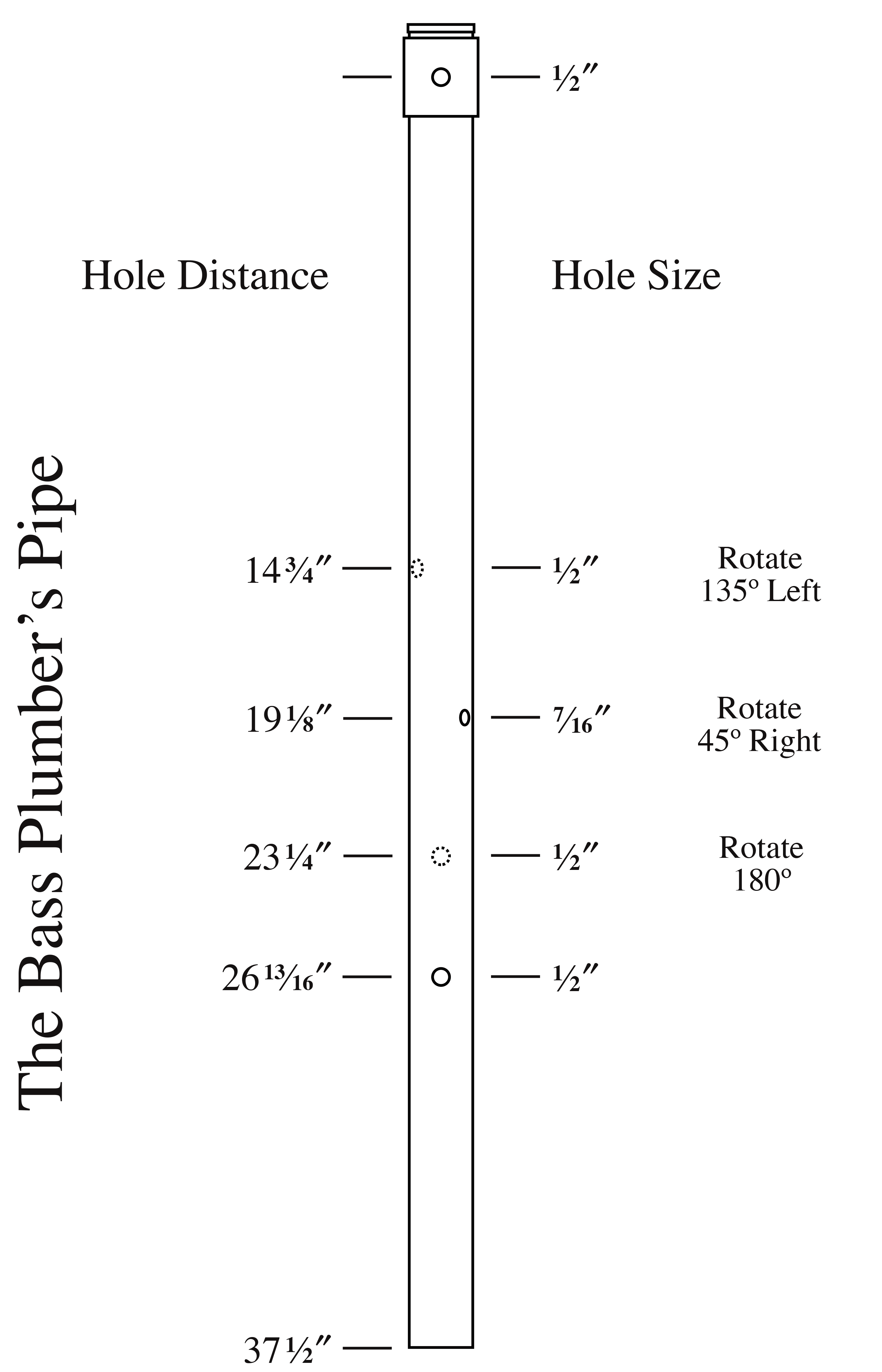This is an addendum to my article on the Plumber’s Pipe or to the “Plastic” section of my book Simple Flutes. If you haven’t already, please read one of those first!—Mark
About a decade after designing the Plumber’s Pipe, I began the design of a “Bass Plumber’s Pipe,” finally completing it in 2004. (See the chart at the end of this article.) It’s a pentatonic flute in the key of D and plays 1‑1/2 octaves. The scale is the minor one from the Japanese shakuhachi, D-F-G-A-C.
Though I’d prefer two octaves with a standard diatonic scale, the limits of hand reach and hole size make that impossible on a keyless flute of this length and width. As it is, you’ll need hands of at least average adult size to play it—and even then, it might be a stretch.
The flute is made from 1‑1/2 inch PVC pipe, Schedule 40, plus a slip coupling and a spigot plug to match. The actual exact dimensions of the pipe are 1‑7/8 inches outside diameter, 1‑9/16 inches inside diameter, 5/32 inch wall thickness. The pipe length is 37‑1/2 inches. This is measured either with the slip coupling off, or from the center of the slip coupling, which is usually marked by a slight ridge or angle.
The wall thickness of the slip coupling too is 5/32 inch, for a total mouthhole depth of 5/16 inch. The width of the coupling’s interior ridge is 1/8 inch. The length of tube inside the spigot plug is 1‑3/8 inches, giving a total flute tube length of 39 inches. The plug is the part that’s most likely to differ for you, and any great difference may require adjustment of hole placement to keep the flute exactly in D and to improve octave tuning.
To keep things simple, I’ve left a slight fudge factor in this flute’s measurements—related to the slip coupling ridge—but I’ll ignore it if you will. I don’t find that it matters on a flute of this length.
The chart shows the size of each hole and the distance to its center from the top of the pipe. Again, you can measure either with the slip coupling off, or from the center of the slip coupling. The mouthhole is itself at the center of the slip coupling, the nominal pipe top.
All but one of the fingerholes are drastically offset, as shown. The holes with dotted lines are on the underside of the flute. All holes are round, though some appear oval on the chart because of flute curvature.
To allow playing with average hands, I’ve placed the holes so they’re covered by each hand’s thumb and ring finger. For the left thumb, you’ll probably need to use the side of the thumb rather than its pad. Since the right thumb is needed for fingering, the flute is supported by the edge of each hand, your right little finger, and your jaw.
Playing a bass flute requires gentler blowing and looser lips than you may be used to. Just relax, take it slow, and be sure to start with all holes uncovered.
This flute too you are welcome to copy and sell. Thanks to flutemaker Romy Benton, one of whose “contrabass” bamboo flutes inspired my own effort.
